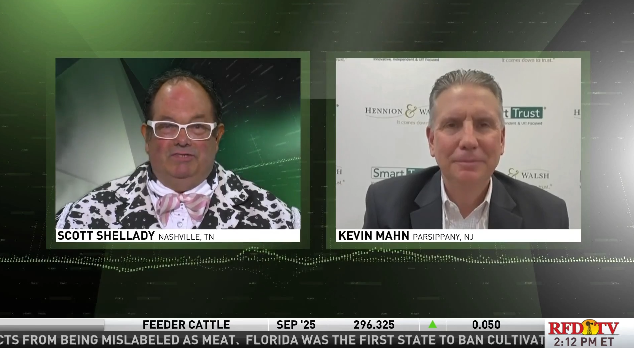
Capital Markets Update – Week of 9/8/2014
Market Overview
Sources: Rates Data and Economic Calendar—Bloomberg Markets as of 9/8/14; Equity Market Returns and Fixed Income and Alternatives Data—Wells Fargo Advisers as of 9/8/14.
Happening Now
Draghi Moves Rates and the Euro Follows
Mario Draghi has backed up the dovish remarks he made during his August 22 speech at the Fed’s Jackson Hole summit with three rate cuts that were announced Thursday, September 4th. The cuts are aimed at spurring lending in the Eurozone as the area continues to make strides at fighting deflation and keeping its economy on an upward trajectory. Specifically, the ECB cut the refinancing rate by 10 bps to 0.05%, the already negative deposit rate was cut further from -0.1% to -0.2% and the marginal lending rate has been cut to 0.3% from 0.4%. Perhaps more significantly, Draghi announced that the ECB is considering additional stimulus measures in the form of Quantitative Easing and will be discussing the details of the program during their October meeting.
The Euro sold off almost immediately following Draghi’s comments and is currently trading around $1.29, its first trip below the $1.30 support level in over a year. This is significant because not only does it signal a more competitive export environment for the Eurozone but also a strengthening dollar. Further strength in the greenback could be seen as the Fed moves closer to their first interest rate hike in 7 years, which, we are expecting in 2015.
While the ECB exhibits signs of a more accommodative monetary stance, the Federal Reserve looks to take a step towards the other side of the spectrum as it gets ready to unwind its own quantitative easing program in October. While the scale of the ECB’s asset purchases is unknown, the world’s second largest central bank will be providing liquidity that could help to offset the moves taken by the Fed and keep downward pressure on global interest rates. Given the importance of interest rates in asset pricing and the many moving parts in the global economy, we suggest a careful review of how your clients’ portfolios may be affected over the next 12 months.
Important Information and Disclaimers
Past Performance is not a guide to future performance.
Investing in foreign securities presents certain risks not associated with domestic investments, such as currency fluctuation, political and economic instability, and different accounting standards. This may result in greater share price volatility. These risks are heightened in emerging markets.
There are special risks associated with an investment in real estate, including credit risk, interest rate fluctuations and the impact of varied economic conditions. Distributions from REIT investments are taxed at the owner’s tax bracket.
The prices of small company and mid cap stocks are generally more volatile than large company stocks. They often involve higher risks because smaller companies may lack the management expertise, financial resources, product diversification and competitive strengths to endure adverse economic conditions.
Investing in commodities is not suitable for all investors. Exposure to the commodities markets may subject an investment to greater share price volatility than an investment in traditional equity or debt securities. Investments in commodities may be affected by changes in overall market movements, commodity index volatility, changes in interest rates or factors affecting a particular industry or commodity.
Products that invest in commodities may employ more complex strategies which may expose investors to additional risks.
Investing in fixed income securities involves certain risks such as market risk if sold prior to maturity and credit risk especially if investing in high yield bonds, which have lower ratings and are subject to greater volatility. All fixed income investments may be worth less than original cost upon redemption or maturity. Bond Prices fluctuate inversely to changes in interest rates. Therefore, a general rise in interest rates can result in the decline of the value of your investment.
Definitions
MSCI- EAFE: The Morgan Stanley Capital International Europe, Australasia and Far East Index, a free float-adjusted market capitalization index that is designed to measure developed-market equity performance, excluding the United States and Canada.
MSCI-Emerging Markets: The Morgan Stanley Capital International Emerging Market Index, is a free float-adjusted market capitalization index that is designed to measure the performance of global emerging markets of about 25 emerging economies.
Russell 3000: The Russell 3000 measures the performance of the 3000 largest US companies based on total market capitalization and represents about 98% of the investible US Equity market.
ML BOFA US Corp Mstr [Merill Lynch US Corporate Master]: The Merrill Lynch Corporate Master Market Index is a statistical composite tracking the performance of the entire US corporate bond market over time.
ML Muni Master [Merill Lynch US Corporate Master]: The Merrill Lynch Municipal Bond Master Index is a broad measure of the municipal fixed income market.
Investors cannot directly purchase any index.
LIBOR, London Interbank Offered Rate, is the rate of interest at which banks offer to lend money to one another in the wholesale money markets in London.
The Dow Jones Industrial Average is an unweighted index of 30 “blue-chip” industrial U.S. stocks.
The S&P Midcap 400 Index is a capitalization-weighted index measuring the performance of the mid-range sector of the U.S. stock market, and represents approximately 7% of the total market value of U.S. equities. Companies in the Index fall between S&P 500 Index and the S&P SmallCap 600 Index in size: between $1-4 billion.
DJ Equity REIT Index represents all publicly traded real estate investment trusts in the Dow Jones U.S. stock universe classified as Equity REITs according to the S&P Dow Jones Indices REIT Industry Classification Hierarchy. These companies are REITSs that primarily own and operate income-producing real estate.




